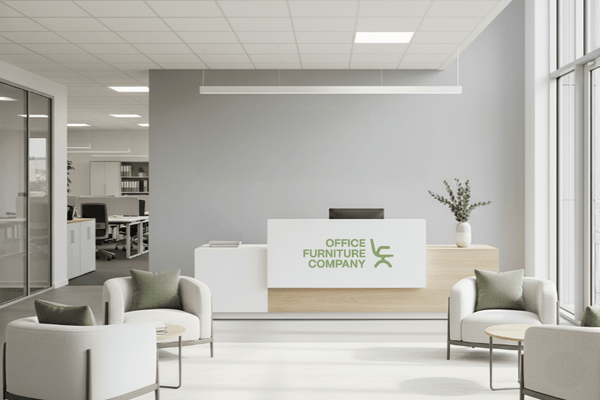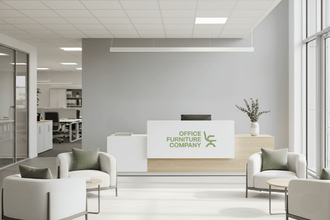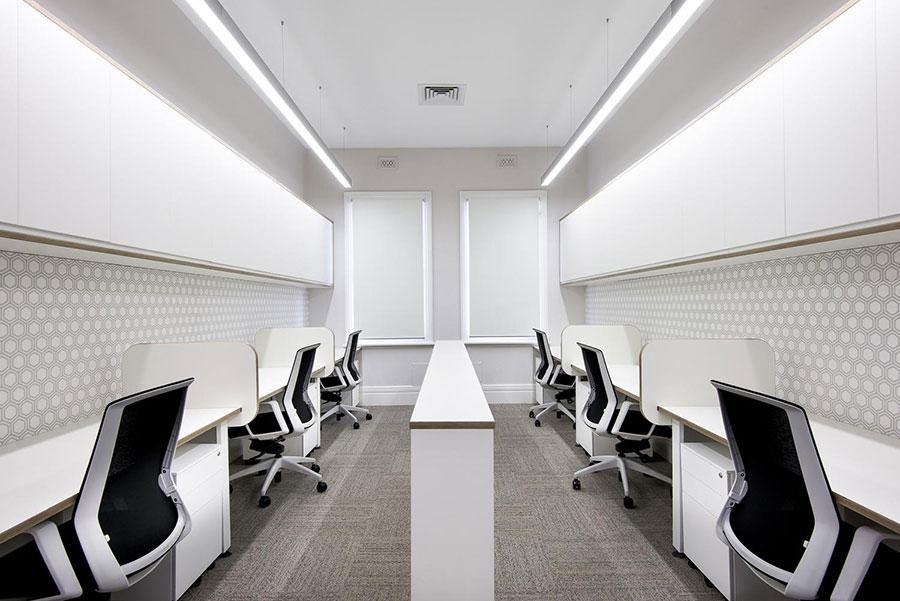
Get to know OFC's Favourite Task Chair - AVEYA CHAIR
With clean lines and an integrated design aesthetic, AVEYA is available with a black or white frame and is a very versatile chair – great for task, managerial and meeting room applications.
The TECH STUFF you will LOVE
The adaptive mesh backrest provides outstanding support and incorporates unique INVISI adjustable lumbar support as standard.
AVEYA’s dynamic synchro mechanism adapts and responds to your movements providing constant support.
The seat of AVEYA can be covered in fabric, leather or vinyl of your selection and the chair is AFRDI certified to Level 6 ‘Severe Commercial Use’.
AVEYA Ergonomics

AVEYA Ergonomic Features and Adjustments
Ergonomic standards and guidelines recommend several working postures – sitting while reclining, upright; standing or alternating between sitting and standing – recognizing that no one posture should be used for a long period of time. A good ergonomic chair allows users to sit in these different postures and provides features and adjustments with the ability to enhance the comfort, productivity, and overall well-being of the occupant. Listed below are Aveya’s key ergonomic features and adjustments along with suggestions on how to adjust the chair to maximize its potential for each individual user.
BACK AND LUMBAR SUPPORT The combination of the frame flex, mesh construction, asymmetrical lumbar adjustment and pelvic support make up the “INVISI” system’s unsurpassed ability to provide comfortable ergonomic support for a broad range of users.
Tension
Aveya’s tension adjustment is a circular wheel located on the right side of the seat pan. Adjusting the tension control regulates the amount of resistance a user feels when leaning back in the chair and the effort required to recline the chair backwards. Forward (clockwise) rotation increases the tension and backward (counterclockwise) rotation decreases the tension. Aveya’s tension can be adjusted to accommodate users of different body types and sizes and for different work styles.
Torsional Movement
Aveya was designed to have passive torsional flex in the upper back. This means the backrest follows the user as it moves, increasing mobility and comfort when reaching sideways for objects.
Mesh Tension
Aveya’s proprietary suspension mesh is a strong, breathable, soft touch woven fabric designed to work in concert with the lumbar and pelvic support. Several studies were completed to identify appropriate mesh tensions which provide users with continuous support.
Lumbar Support
When standing, the spine naturally forms an “S-curve,” but when seated, the bottom of the back tends to round out as the tailbone is curled under causing the curvature to disappear. This can cause lower back pain when seated, so it is important to maintain the lumbar curvature (lordosis) that occurs normally in the spine of the lower back. Aveya’s ‘INVISI’ adjustable lumbar support was designed so it can be set individually by differently people based on the amount of support they desire. The two individual tabs to adjust the lumbar support are located on the back of the chair on the left and right side. The lumbar location adjusts 50mm vertically along the back of the user.
Pull up or down to adjust the height of the lumbar position. When adjusting the lumbar, the height of the lumbar pad should coincide with the lumbar curve (“the small”) of the user’s back. The handles can also be adjusted independently of each other so users can achieve varying amounts of support on either the right or left side of their lower back.
Pelvic Support

Aveya’s pelvic support works in combination with the lumbar support to keep the pelvis from rotating backwards to help maintain the curvature in the lumbar region of the user’s back.
Backrest to Seat Pan Angle
The angle between Aveya’s backrest and the seat pan allows users to sit with the correct torso-to-thigh angle while still allowing users to perform their tasks. As users recline in the chair, they should also feel a decrease in pressure on the tailbone and lower back.
Tilt Back Stop
Aveya’s tilt backstop allows users to select an upright position or lock the recline in several positions. This gives users the ability to select their preferred posture and change postures throughout the day. The tilt back stop lever is located on the left side of the seat pan — to activate it, twist the left control handle (2) up towards seat to unlock the mechanism and enable dynamic ‘freefloat’ mode. You can now move freely and the chair will follow your movements once the tension is set correctly. If you desire the chair to be in locked mode, twist the left control handle downwards away from the seat to lock the chair in position.
SEAT PAN
Waterfall Front Edge
Aveya’s seat pan was designed with a rounded or “waterfall” front edge to help relieve pressure on the back of the thighs/knees. Seat pan edges without a “waterfall” design or without a front edge flex can restrict blood flow causing fatigue and pain.
Seat Pan Shape
The contours of Aveya’s seat pan design have been developed over years of product iterations to provide maximum comfort by placing increased foam depth in areas of needed support and to provide flexibility in the seat pan to promote movement.
Seat Pan Material
Aveya’s cushioning materials are molded high-resilient polyurethane foam with densities which provide excellent support and longevity.

Seat Height
The pneumatic height adjustment lever for Aveya is located under the seat pan on the front right side of the seat pan. To increase seat height, pull up on the lever and raise your body out of the chair. To decrease seat height, stay in the chair and pull up on the lever. It is important to ensure that seat height is adjusted correctly to avoid hindering circulation to the lower limbs. Seat height should be adjusted so the user is able to place his/her feet flat on the floor or footrest with the thighs parallel to the floor and knees bent at 90 degrees or greater. Users should avoid putting their feet under the chair since this will hinder circulation to the lower limbs. The thighs should be gently resting on the seat pan. If the seat pan is pressing firmly into the back of the thighs, the seat may be too high. The angle between the user’s thigh and abdomen (hip angle) should also be greater than 90 degrees. If seat height is too low, the user’s legs won’t be properly supported and his/her knees will be too high creating a decreased hip angle which may cause cramping.
Seat Pan Depth
The seat pan depth adjustment lever for Aveya is located under the seat pan on the right side (4). Aveya’s seat pan can be adjusted in depth in order to accommodate a wider range of the population. When sitting with the knees bent at 90 degrees, the seat pan should be adjusted so it does not touch the back of the knees or infringe upon the ability to bend the knees to angles less than 90 degrees. This provides the thighs with support without creating pressure behind the knees. Additionally, this allows the user to sit back far enough in the seat pan to use the lower portion of the backrest.
ARMRESTS
Armrest Height
Aveya has a range of height adjustment to accommodate user’s varying elbow rest heights. Armrests should be placed so the user’s arms are bent at a 90 degree angle or greater with the shoulders remaining in a neutral posture. If the armrests are too high, users will be forced to “shrug” their shoulders. If the armrests are too low, users may experience a “pulling” sensation in their shoulders or the muscles extending from their neck to their shoulders. The armrest height adjustment button is located on the front underside of the armrest post just below the armrest pad. To change the height of the armrest, just push the button in and slide the armrest up or down as needed then release the button.
Armrest Side-to-Side
Side-to-side adjustment of the armrests allows them to be adjusted in closer to the seat pan for users with narrower shoulders and adjusted further from the seat pan for individuals with wider shoulders. To change the width of the armrests, grasp the armrest cap and move it closer or further away as needed.
Armrest Front-to-Back
Front-to-back adjustment allows users to position the armrest so they can get close enough to their worksurface to perform tasks while maintaining effective use of the backrest. To change how far forward/backward the armrest is, grasp the armrest cap and move it forward or backwards as needed.
Balanced Three Point Tilt Mechanism
Adjusting the chair’s back tension based on the size and shape of a person allows Aveya to suspend the user. This provides a balanced ride for all sizes and shapes. Aveya’s pivot points are located at the hip, knee and ankle, which follow the normal movements of the body making it easier to recline. So once the tension is adjusted correctly for a user, little effort is needed to recline in the chair allowing the user to stop at any point while reclining. Additionally, as the user reclines in the chair, he or she doesn’t lose contact with the backrest which is an important feature in helping the user maintain the lumbar curvature. This feature combined with the location of the pivot points also reduces or eliminates the occurrence of “shirt-pull,” which is the pulling up on the user’s shirt by the seat back as the user reclines.
Remember…
Any adjustments made to the user’s chair need to be made while taking into consideration the workstation arrangement (height, knee clearance, etc.) and the task being performed. Users should adjust their chairs to a point where they feel comfortable and to a position that suits their personal needs or tasks. When that position becomes uncomfortable (as it certainly will over a long period), the chair should be readjusted. Don’t be afraid to experiment. In fact, constant fine-tuning chair adjustments will yield the greatest benefits because as users adjust it, they are moving, and movement is the key to a healthy and ergonomically sound office environment.

ERGONOMIC STANDARDS/GUIDELINES
Based on the features of the chair model, Aveya ergonomics can be referenced against the following ergonomic standards and guidelines: • BIFMA G1-2002: Ergonomics Guideline for VDT (Visual Display Terminal) Furniture Used in Office Work Spaces • BSR/HFES 100-2002: Human Factors Engineering of Computer Workstations, draft standard for trial use.

Here is what Tech Guide has to say about our Aveya chair.
